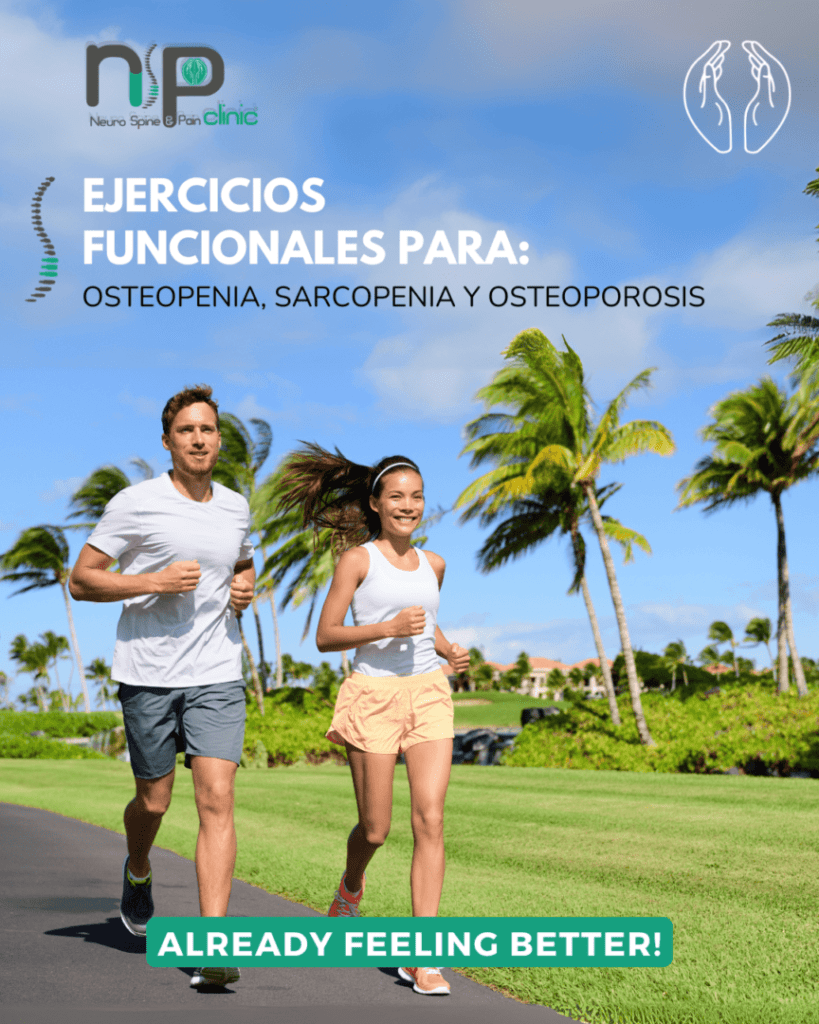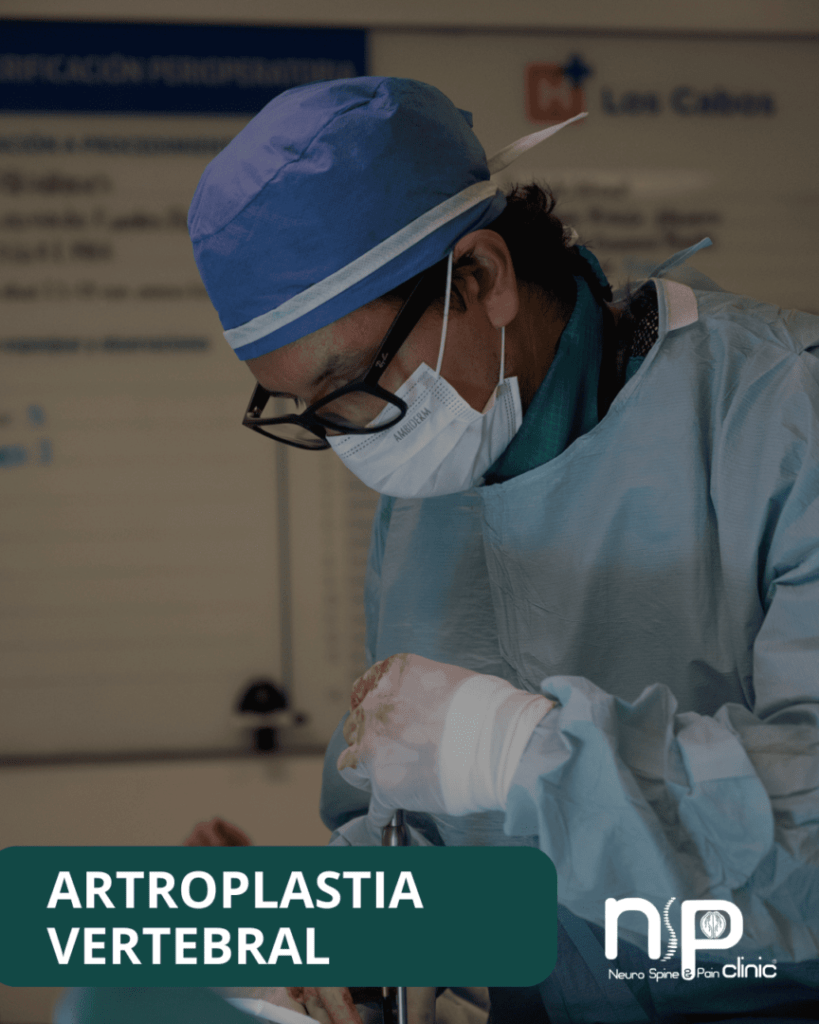At Neuro Spine and Pain Clinic (“NSP Clinic”), a clinic located in San José del Cabo BCS, we understand the importance of bone health in the quality of life of our patients. Therefore, the bone densitometry study is an essential tool to evaluate bone mineral density and detect conditions such as osteopenia and osteoporosis.
At NSP, we are a center where our staff is certified by the AMMOM (Mexican Association of Bone Metabolism and Nutrition), our commitment is to provide comprehensive and patient-centered care. The most effective test to diagnose osteopenia in men >50 years and women >40 years postmenopausal mainly, is dual X-ray densitometry (DXA). This test measures bone mineral density in key areas, such as the spine, hip and forearm.
DXA results
The results include a medical report in which you will be given medical suggestions according to your result. It is also stored in our database for future comparative measurements. It is important for comparative studies of patients undergoing treatment for osteoporosis. In this way, when repeating the analysis, the effectiveness of the treatment can be compared and demonstrated, as well as the current condition of the patient.
Muscle mass assessment
Bioelectrical impedance (BIA): This method measures body composition and estimates muscle mass. Bone densitometry (DXA): Although its main objective is to measure bone density, it can also assess muscle mass, subcutaneous fat and visceral fat. Through bone densitometry, we seek not only to diagnose, but also to provide our patients with the information necessary to make decisions, recover their health and inform them about the exercises they can perform based on their results. The well-being of our patients is our priority.
Physical exercise is essential for people with osteopenia and osteoporosis. A condition characterized by a decrease in bone density that can increase the risk of fractures. Here are some key benefits of exercise in this context:
Benefits of physical exercise in people with osteopenia and osteoporosis
1. Increased bone densityWeight-bearing exercise, such as walking, weight lifting, or resistance training, can help stimulate bone formation and improve bone density.
2. Improve balance and coordination: Balance and stability exercises help reduce the risk of falls, which are especially dangerous for people with osteopenia and osteoporosis.
3. Muscle strengtheningStrengthening the muscles surrounding your bones can provide better support and stability, which reduces the risk of fractures.
4. Improved posture: Exercises that focus on alignment and posture can help prevent spinal deformities and improve body mechanics.
5. Increased mobility and flexibility: Regular physical activity improves range of motion in your joints, which can make daily activities easier.
6. Cardiovascular benefits: Regular exercise improves cardiovascular health, which is important for overall well-being and quality of life.
7. Positive impact on mental health:Physical activity can reduce stress, anxiety and depression, improving mood and quality of life.
8. Weight controlMaintaining a healthy weight can help reduce the load on your bones and joints.
Sarcopenia is the loss of muscle mass and strength that occurs with aging. Exercise is a fundamental tool to address this condition and improve the quality of life of people who suffer from it. Here are the benefits and recommendations on exercise for people with sarcopenia.
Benefits of exercise in people with sarcopenia:
1. Increase in muscle mass: Resistance exercises, such as weight lifting, help stimulate protein synthesis in the muscles, promoting muscle growth.
2. Strength improvementStrengthening muscles allows you to perform daily activities more easily, which contributes to functional independence.
3. Increased mobility: Improving muscle strength and function facilitates mobility and reduces the risk of falls.
4. Improve balanceBalance and stability exercises help prevent falls, which are common in people with sarcopenia.
5. Metabolic benefits: Regular exercise can improve insulin sensitivity and contribute to weight control.
6. Mental health:Physical activity is linked to better mental health, reducing the risk of depression and anxiety.
7. Improving quality of life:Increasing strength and mobility translates into a better quality of life and greater overall well-being.
Low impact aerobic exercise
It is a form of physical activity that raises the heart rate without putting a lot of stress on the joints. This type of exercise is ideal for people who are looking to stay active without the risk of injury, such as those who have joint problems, are older, or are undergoing rehabilitation.
Benefits of low-impact aerobic exercise:
1. Cardiovascular improvement: Strengthens the heart and lungs, improving circulation and endurance.
2. Burning calories: Helps control weight by burning calories effectively.
3. Increased flexibility: Many low-impact activities, such as yoga or pilates, improve flexibility and mobility.
4. Lower risk of injury: Being gentler on the joints, it reduces the risk of injury.
5. Mental wellbeing: It can improve mood and reduce stress, thanks to the release of endorphins.
Examples of low-impact aerobic exercises:
• Walk briskly
• Swim
• Cycling on a stationary bike or outdoors
• Water aerobics
• Soft dance classes
• Elliptical exercises
This type of exercise is accessible and can be adapted to different fitness levels, making it a great option for many people.
Muscle strengthening exercise
It focuses on increasing strength and muscle mass through resistance. These exercises are essential for maintaining good overall health and preventing injuries, as they help improve muscle function and stability.
Benefits of muscle strengthening exercises:
1. Increase in strength: Improves the ability to perform daily and sports activities.
2. Improving body composition: Increases muscle mass and can help reduce body fat.
3. Bone health: Strengthens bones and may reduce the risk of osteoporosis.
4. Metabolism: Increases basal metabolism, which helps in weight control.
5. Injury prevention: Strengthens muscles and joints, reducing the risk of injury.
6. Improving mental health: It contributes to self-esteem and can reduce anxiety and depression.
Types of muscle strengthening exercises:
1. Weight training: Use of free weights (dumbbells, bars) or weight machines.
2. Bodyweight exercises: Push-ups, squats, pull-ups, and other exercises that use your own body weight as resistance.
3. Resistance bands: Use elastic bands to perform resistance exercises.
4. Functional training: Exercises that mimic everyday movements, improving strength and coordination. Incorporating muscle strengthening into your exercise routine can have a significant impact on your overall health and well-being. It's an essential part of an active lifestyle!
Bodyweight bearing exercise
These are movements that use the body's own weight as resistance. These exercises are highly effective in developing strength, stability and flexibility without the need for additional equipment.
Benefits of Bodyweight Bearing Exercise:
1. Improving muscle strength: Strengthens multiple muscle groups at once.
2. Increased stability: Improves balance and coordination.
3. Flexibility and mobility: Helps maintain range of motion in joints.
4. Accessibility: They can be done anywhere, without the need for equipment.
5. Injury prevention: Strengthens stabilizing muscles, reducing the risk of injury.
6. Improved cardiovascular fitness: Many bodyweight exercises elevate the heart rate, contributing to cardiovascular fitness.
Examples of bodyweight bearing exercises:
1. Push-ups: They strengthen the chest, shoulders and triceps.
2. Squats: They work the legs and glutes.
3. Iron: Strengthens the core and improves stability.
4. Lunges: They work the legs and improve balance.
5. Burpees: Full body workout that combines strength and cardio.
Bodyweight bearing exercise is a great option for any fitness level and can be a key part of a well-rounded workout routine. It's an effective and versatile way to stay fit!
Balance exercises
They are essential for improving body stability and coordination. These exercises focus on strengthening the muscles that help maintain balance and are especially important as we age, as they can prevent falls and injuries.
Benefits of balance exercises:
1. Fall prevention: They strengthen stabilizing muscles, reducing the risk of falls, especially in older people.
2. Improving coordination: They increase the ability to control and coordinate movements.
3. Core strengthening: Many balance exercises involve the use of the abdominal and lower back muscles, improving overall stability.
4. Better posture: They promote proper body alignment, which can reduce pain and injury.
5. Increased agility: They contribute to improving reaction and agility in sports activities.
Balance exercises are an effective way to improve stability and coordination, benefiting not only seniors, but anyone looking to improve their physical performance and prevent injuries. They are a great addition to any exercise routine!
Coordination exercises
They are essential for improving the body's ability to control and synchronize movements. These exercises are especially beneficial for developing motor skills, improving performance in sports, and preventing injuries.
Benefits of coordination exercises:
1. Improving motor skills: Helps to perform more fluid and precise movements.
2. Increased sports performance: Improves dexterity and agility, which is key in many sports activities.
3. Injury prevention: Strengthens stabilizing muscles and improves proprioception, reducing the risk of injury.
4. Development of balance: Many coordination exercises also help improve balance.
5. Cognitive stimulation: It requires concentration and attention, which can improve mental agility.
Coordination exercises are essential not only for athletes, but for anyone looking to improve their overall physical ability and functionality. They are a fun and dynamic part of any training routine!
Proprioception exercises
They are designed to improve the body's ability to perceive its position, movement and balance. Proprioception is crucial for maintaining stability and coordination, and plays a vital role in injury prevention, especially in sports and physical activities.
Benefits of proprioception exercises:
1. Improve balance: Strengthens stabilizing muscles and improves the ability to maintain balance in a variety of situations.
2. Injury prevention: Increases body awareness and reaction to changes in posture, reducing the risk of sprains and falls.
3. Injury recovery: Helps in the rehabilitation of injuries, especially in ankles and knees, by restoring functionality and strength.
4. Improving sports performance: Contributes to better execution of complex movements in sports.
Proprioception exercises are a valuable tool for improving body control, stability, and injury prevention. Incorporating them into your routine can make a huge difference in your physical performance and overall well-being!
In conclusion, bone densitometry is a vital tool for the prevention and management of bone health, especially in the early identification of conditions such as osteopenia, sarcopenia, and osteoporosis. At Neuro Spine and Pain Clinic, we are committed to offering our patients a comprehensive and personalized approach that not only assesses their bone health, but also provides them with the necessary strategies to strengthen their bones and improve their quality of life.
Remember that early detection can make all the difference in the treatment and prevention of fractures. If you have concerns about your bone health or would like to schedule a bone density test, please do not hesitate to contact us. We are here to support you every step of the way to a healthier, more active life.
Thank you for reading and we hope to see you soon!











